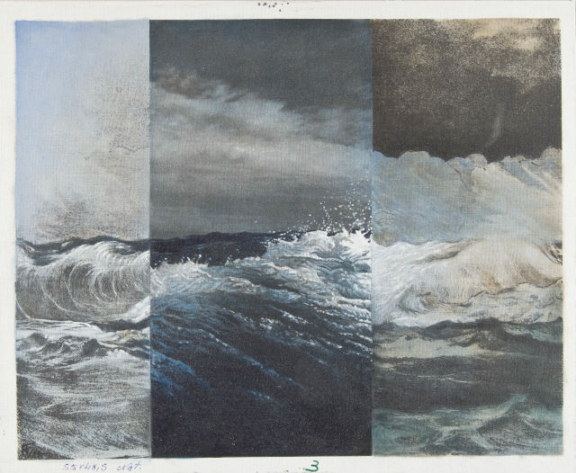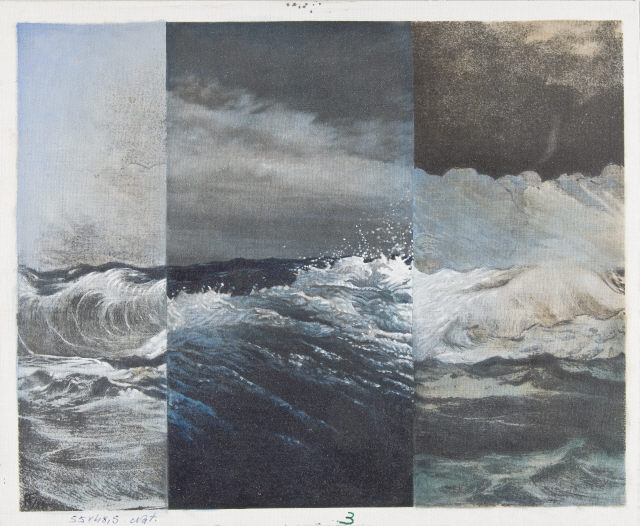
- 1983
- Photosensitized canvas
- Acrylic paint
- Inv. 84P709
Ricardo da Cruz-Filipe
Mar nº 3 [Sea nr. 3]
An engineering graduate from the Instituto Superior Técnico de Lisboa, where he was an assistant professor, Cruz-Filipe began his career as a self-taught painter in 1955. Working at first with collages of fragments of painting, he later started using photosensitive canvasses for his compositions, a technique developed in advertising and introduced within the Nort American art world by Andy Warhol in the early 1960s. He showed these works for the first time in 1970, at the Galeria 111 in Lisbon.
The four works entitled Mar [Sea] (1, 2, 3 and 4) in CAM’s collection were produced through a combination of photography and painting on photo-sensitised canvas. To create these works, the artist cuts up his own photographs or images from magazines and newspapers, manually creating a montage through cut and paste editing, with clear references to the world of cinematography. The resulting image is then photographed onto black and white negative film, which is transferred to the highly absorbent photosensitive canvas. The canvas, with the photographic image applied to it, is then worked on with acrylic paint.
The central element of these works is the sea. Within the sea, another sea, framed by a rectangle, square or column. The line of the horizon traces a common thread to the four works. But they share also the making up, through the superimposition of images which refer to reality, of fictional, non-existing seascapes, which feel nonetheless close to our imaginary.
PR
November 2011
Reviewed by GV, October 2012
| Type | Value | Unit | Section |
| Width | 32,5 | cm | |
| Height | 26 | cm |
| Type | Acquisition |
| Linha do Horizonte |
| Direcção-Geral das Artes |
| Curator: Bernardo Pinto de Almeida |
| 5 de Maio de 2008 a 15 de Junho de 2008 Rio de Janeiro, Centro Cultural da Caixa Económica Federal |
| 14 de Agosto de 2008 a 28 de Setembro de 2008 Museu Nacional Soares dos Reis |
| A Direcção Geral das Artes organizou a exposição "Linha do Horizonte", apresentando o motivo da paisagem na arte portuguesa contemporânea.. Esta exposição fez parte das comemorações dos 200 anos da chegada da corte ao Brasil. |
